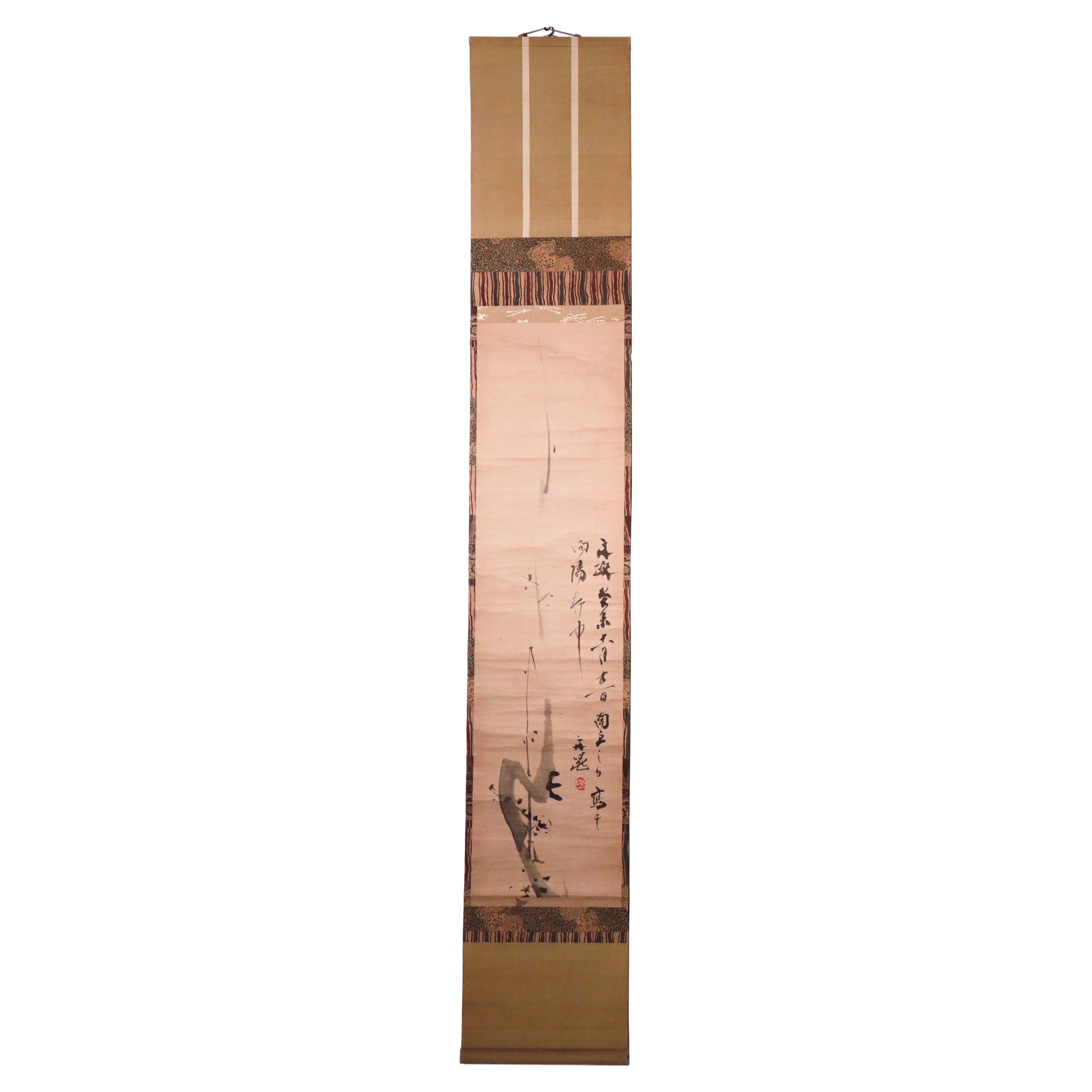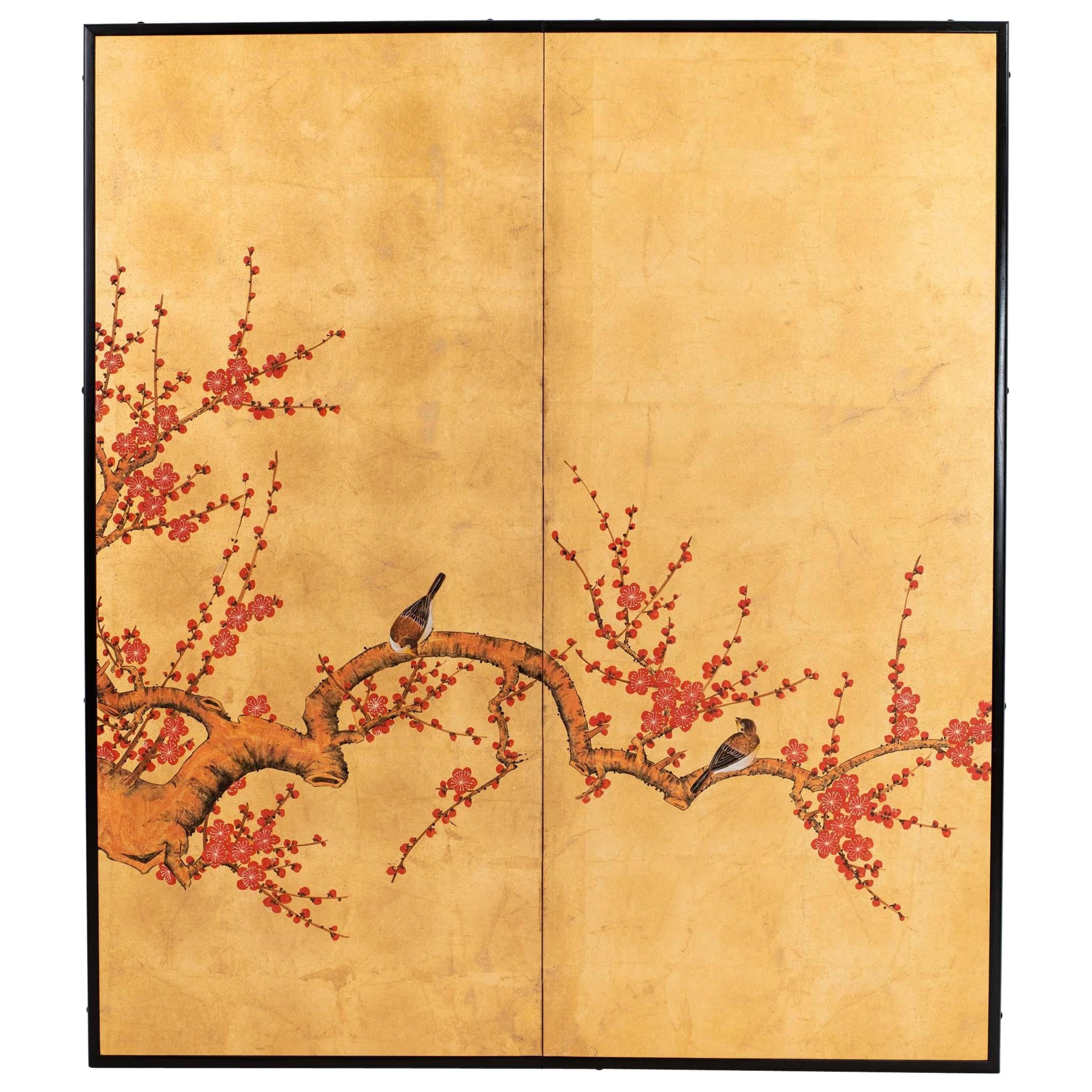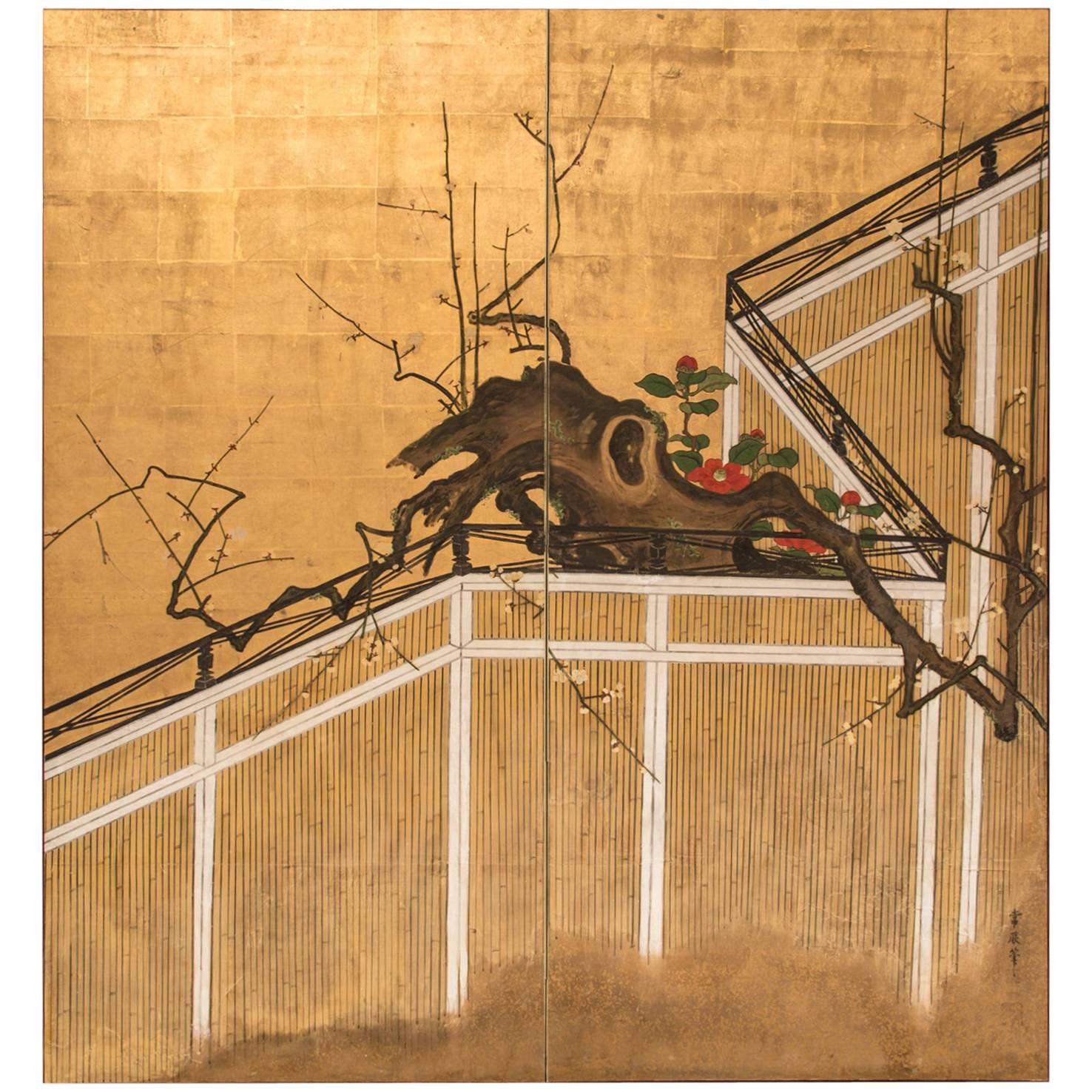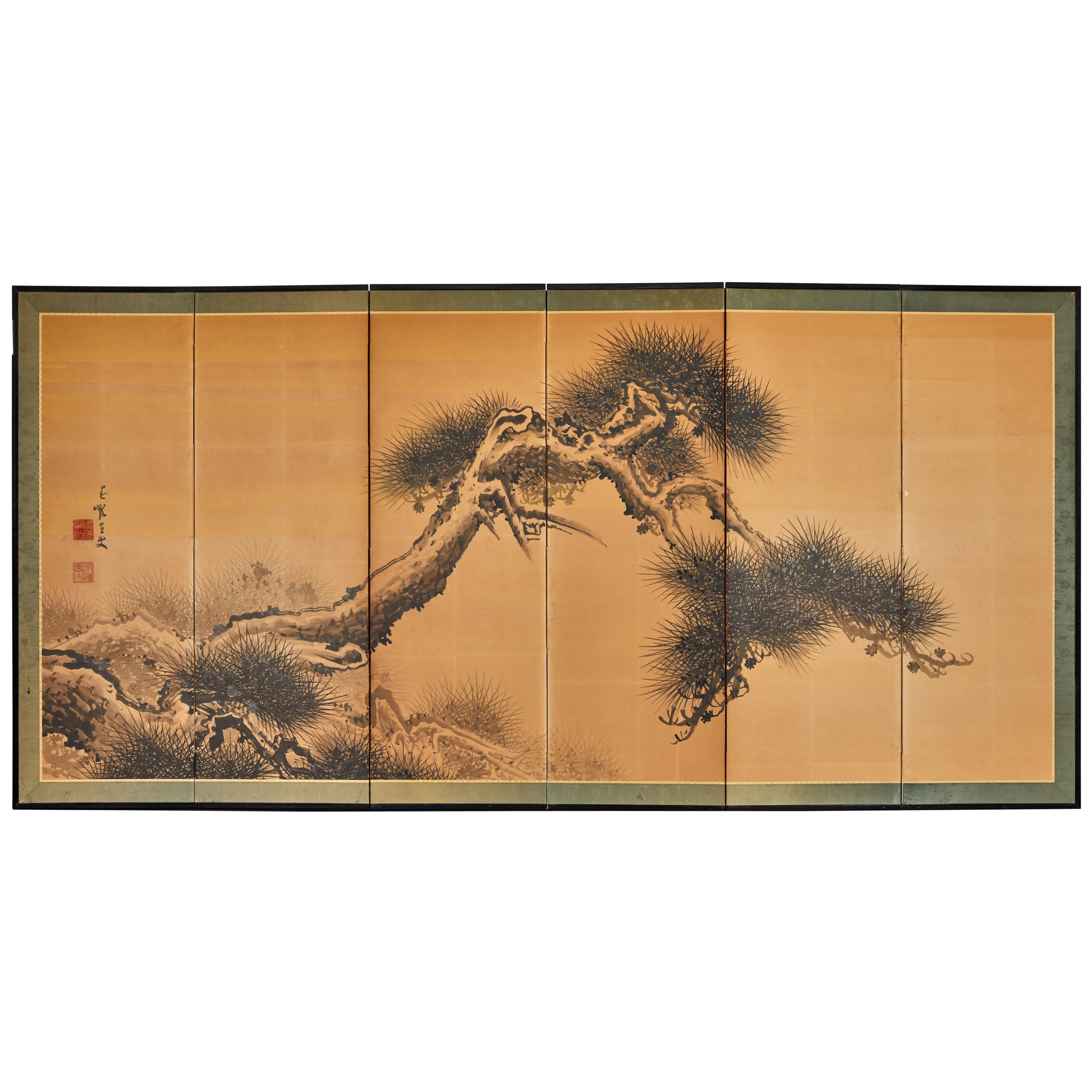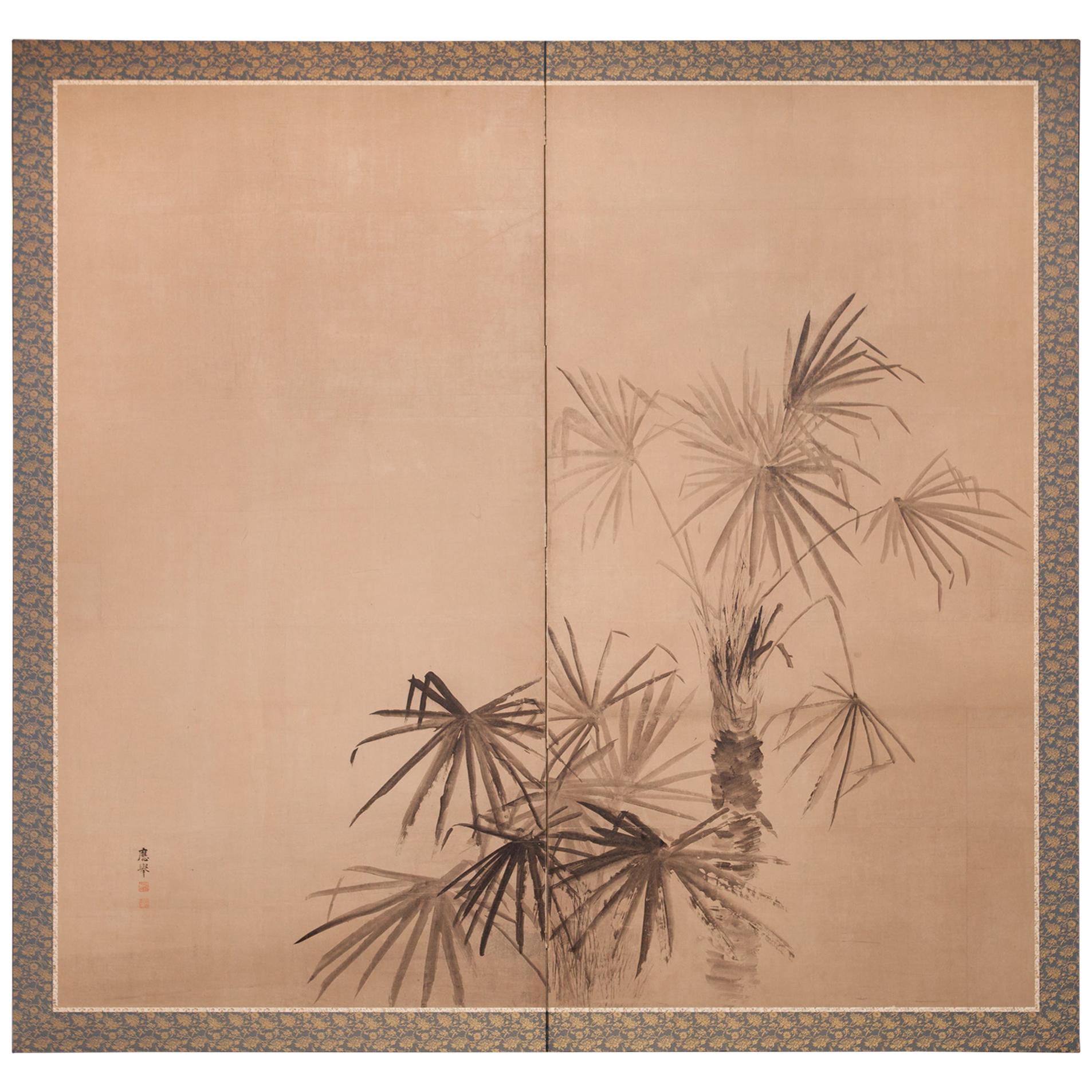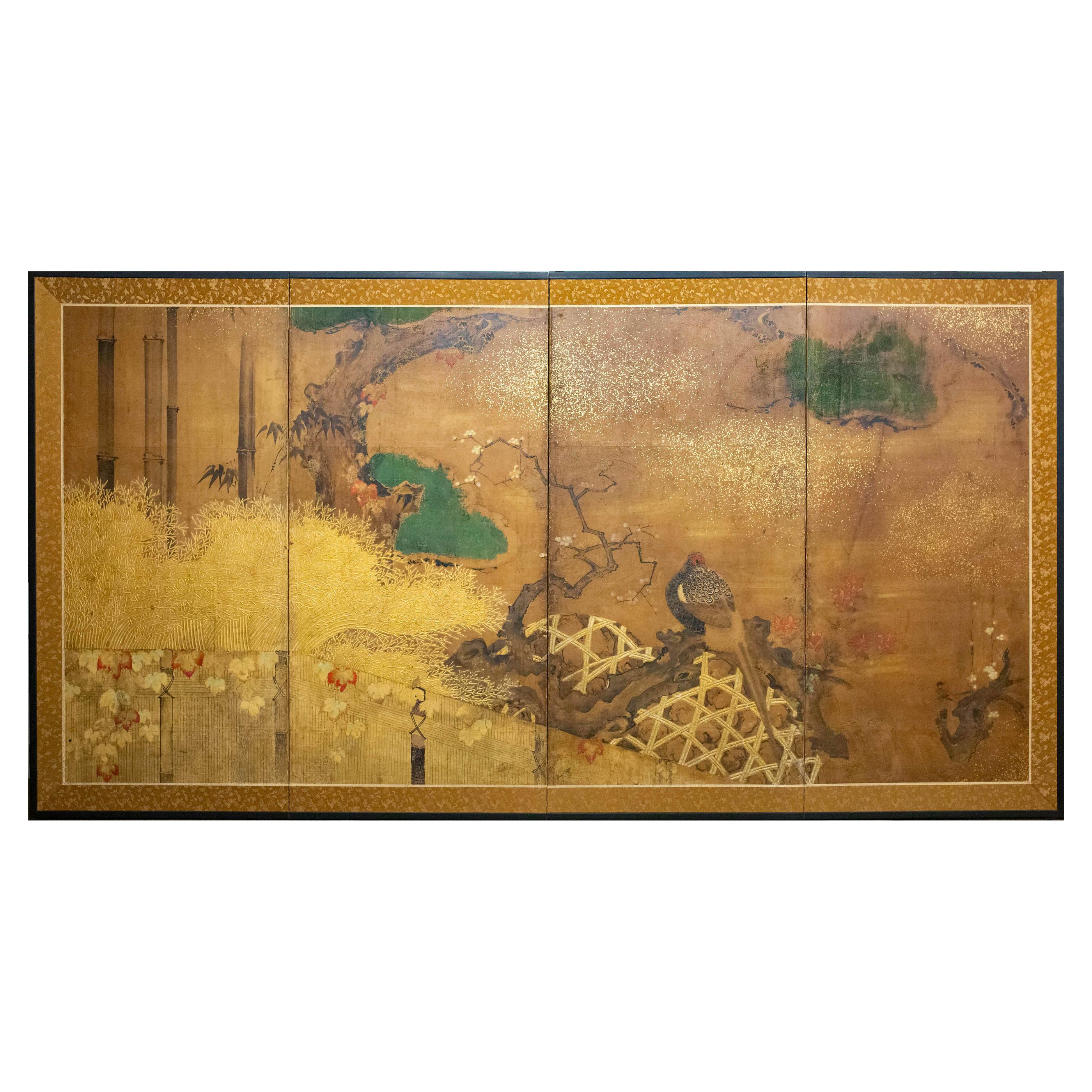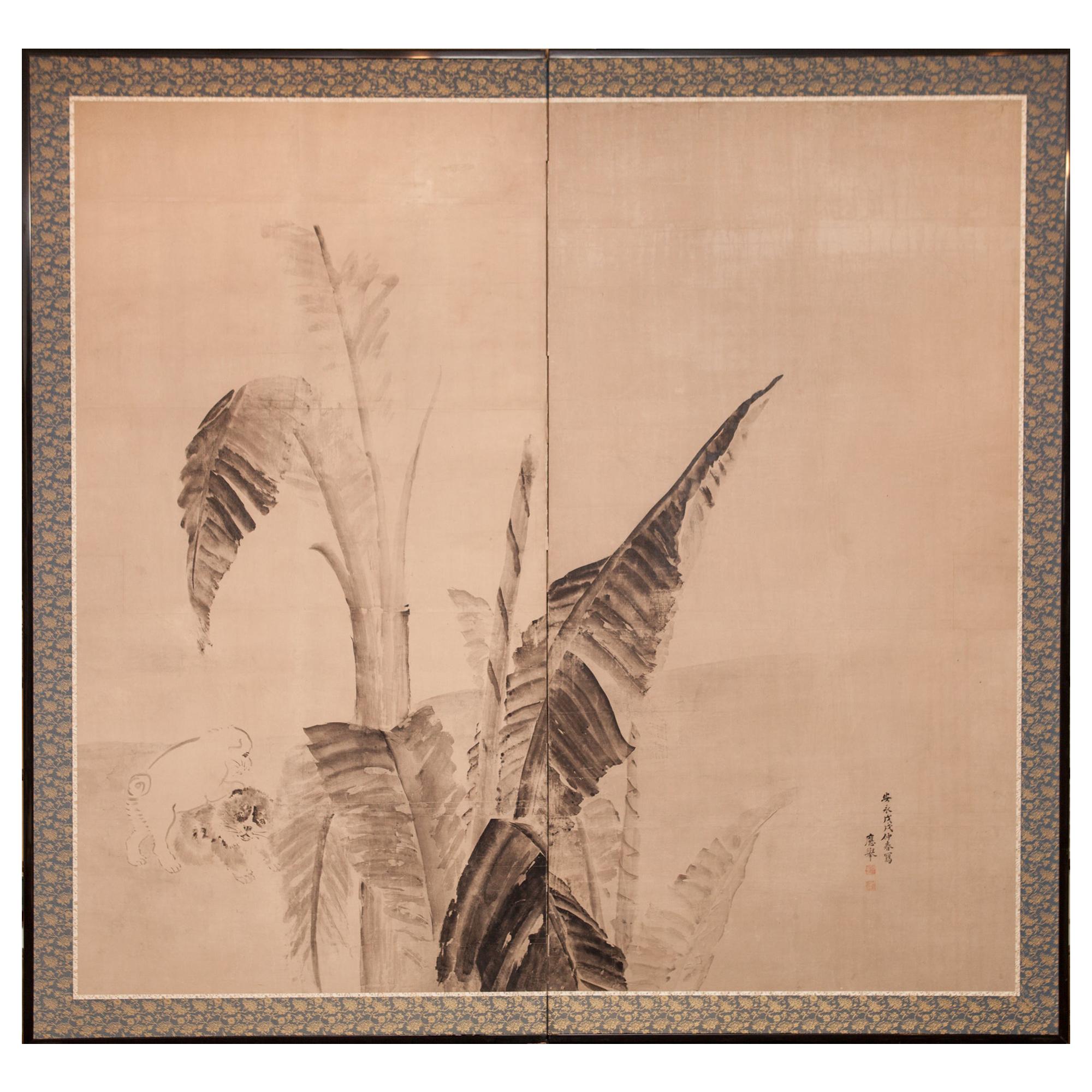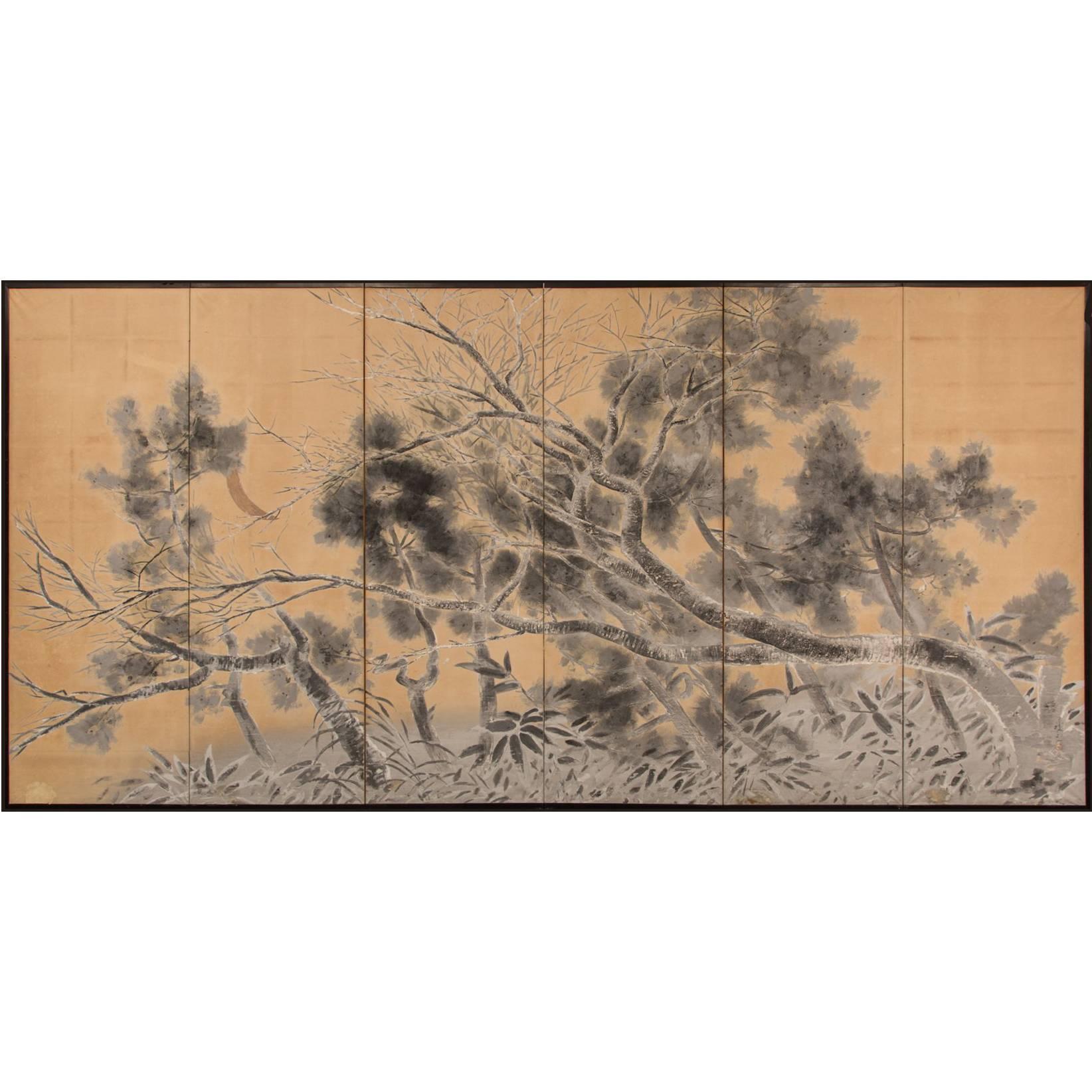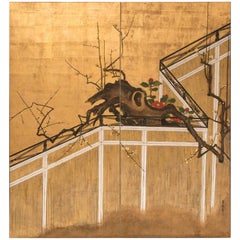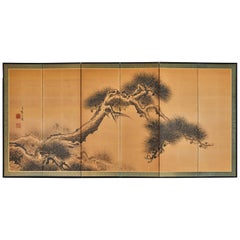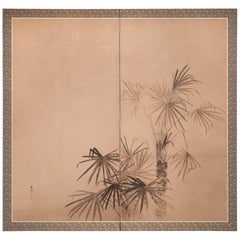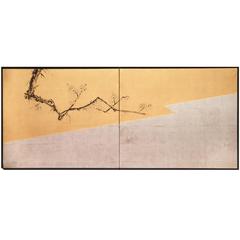
Japanese Screen 'Ink Painting of Plum Blossom'
View Similar Items
Want more images or videos?
Request additional images or videos from the seller
1 of 2
Japanese Screen 'Ink Painting of Plum Blossom'
About the Item
- Dimensions:Height: 28.75 in (73.03 cm)Width: 65.5 in (166.37 cm)Depth: 1.5 in (3.81 cm)
- Place of Origin:
- Period:
- Date of Manufacture:circa 1950-1960
- Condition:Condition very good, details available upon request.
- Seller Location:Hudson, NY
- Reference Number:Seller: S14171stDibs: LU85514261583
About the Seller
5.0
Recognized Seller
These prestigious sellers are industry leaders and represent the highest echelon for item quality and design.
Established in 1971
1stDibs seller since 2008
150 sales on 1stDibs
Typical response time: 4 hours
Associations
The Art and Antique Dealers League of AmericaAntiques Associations Members
More From This SellerView All
- Japanese Two-Panel Screen, Camellia and Plum Blossom over Garden FenceLocated in Hudson, NYArtist signature reads: Tsunetoki hitsu Mineral pigments on gold leaf.Category
Antique Early 19th Century Japanese Paintings and Screens
- Japanese Six Panel Screen: Ink Painting of a Weathered Pine TreeLocated in Hudson, NYMeiji period (1868 - 1912) sumi-e (or ink painting) on paper of a venerable pine tree with limbs stretching out over a bluff. Beautiful signature and seal read: Biei. Ink on paper ...Category
Antique 19th Century Japanese Paintings and Screens
MaterialsBrocade, Silk, Paper
- Japanese Two-Panel Screen Ink Painting of Palm Trees on PaperLocated in Hudson, NYJapanese two-panel screen: ink painting of Palm Trees on paper, Edo period (1787) beautiful painting of Japanese windmill palm trees. Ink paint...Category
Antique 18th Century Japanese Edo Paintings and Screens
MaterialsPaper, Silk, Wood
- Japanese Four-Panel Screen "Rimpa Painting of Pheasant on Old Plum in Garden"Located in Hudson, NYWith raised twig fence and poultry cages (used for chicken, pheasants, etc). Wood vine on the fence, and some seasonal flowers in bloom. Delicately painted with wonderful colors and ...Category
Antique Early 19th Century Japanese Paintings and Screens
MaterialsGold Leaf
- Japanese Screen Painting of StallionsLocated in Hudson, NYJapanese two panel screen: Painting of stallions. Kano school of painting. Mineral pigments on mulberry paper.Category
Antique 19th Century Japanese Paintings and Screens
- Japanese Two Panel Screen Ink Painting of Banana Leaves on Mulberry PaperLocated in Hudson, NYEdo period (dated 1787) beautiful painting of unfurling palm leaves with romping puppies in the background. Ink painting (sumi-e) on mulberry paper. Signature reads: Okyo. Calligraph...Category
Antique Late 18th Century Japanese Edo Paintings and Screens
MaterialsPaper
You May Also Like
- Japanese ink on paper painting of Plum Blossoms, Tani BunchoLocated in Point Richmond, CAJapanese ink on paper painting of Plum Blossoms and Poem, scroll mounting, signature & single seal: Tani Buncho (1763 - 1840). A famous and prol...Category
Antique 19th Century Japanese Meiji Paintings and Screens
MaterialsPaper
- Contemporary Hand-Painted Japanese Screen of Red Plum Blossom and BirdsLocated in 10 Chater Road, HKThe red plum blossom and birds painting of this two-panel screen is hand-painted in watercolor, on squares of gold leaf which are applied by hand to the paper base over carefully joi...Category
2010s Chinese Paintings and Screens
MaterialsGold Leaf
- 17th Century Japanese Screen. Ink Plum Tree & Birds by Kano Naonobu.Located in Kyoto, JPKano Naonobu (1607-1650) Plum Tree and Birds Six-fold Japanese Screen. Ink and slight color on paper. In this evocative ink work spread over a six-panel folding screen, we see the consummation of the elegance and refinement of the Edo Kano school. This 17th century screen is a rare surviving example of a large-scale bird and flower painting by Kano Naonobu, the younger brother of Kano Tanyu...Category
Antique 17th Century Japanese Edo Paintings and Screens
MaterialsWood, Paper
- 19th Century Japanese Screen for Tea-Ceremony, Ink Bamboo and Plum on Gold LeafLocated in Kyoto, JPThree Friends of Winter Nakajima Raisho (1796-1871) Late Edo period, circa 1850 Ink and gold leaf on paper. This is a double-sided Japanese Furosaki or tea-ceremony screen from the mid 19th century; bamboo and plum on the front, young pines the back. It by Nakajima Raisho, a master painter of the Maruyama school in the late Edo and early Meiji periods. In this work Raisho combines exquisite ink brushwork with large open spaces of brilliant gold-leaf to inspire the viewers imagination. Rather than naturalism, he is searching for the phycological impression of the motifs, resulting in abstraction and stylization. His simplification of the motifs the result of looking to capture the inner nature of the objects. This art motif is known as Sho Chiku Bai, or the Three Friends of Winter. Evergreen pine connotes steadfastness, bamboo suggests both strength and flexibility, while plum blossoms unfurling on snow-laden branches imply hardiness. Combined, this trio is emblematic of Japanese new year. Chinese literati were the first to group the three plants together due to their noble characteristics. Like these resilient plants flowering so beautifully in winter, it was expected of the scholar-gentleman to cultivate a strong character with which he would be able to show the same degree of perseverance and steadfastness even during times of adverse conditions. The screen would have been placed near the hearth of a room used for the Japanese tea ceremony, shielding the fire from draughts and also forming a stimulating and decorative backdrop behind the tea utensils. It would have been used in the Hatsugama, or first tea-ceremony of the new year. Nakajima Raisho (1796-1871) originally studied under Watanabe Nangaku before entering the school of Maruyama Ozui. He was the highest ranking Maruyama school painter at the end of the Edo period and was known as one of the ‘Four Heian Families’ along with Kishi...Category
Antique Mid-19th Century Japanese Edo Paintings and Screens
MaterialsGold Leaf
- 17th Century Japanese Framed Painting by Kano Sansetsu, Plum Blossoms in SnowLocated in Kyoto, JPKano Sansetsu (1589-1651) Plum blossoms in snow Edo period, circa 1640 Framed painting. Ink on paper. Kano Sansetsu is a Japanese painter who...Category
Antique 17th Century Japanese Edo Paintings and Screens
MaterialsPaper
- Pair of Japanese Screens: ink paintings of peacocks on gold leaf by Imao KeinenBy Imao KeinenLocated in Prahran, VictoriaA pair of screens by Imao Keinen featuring peacocks painted in ink on gold leaf. Lacquered wood frame, brocade border, incised copper hardware. Dimensions: H 175cm x W 352cm Biogr...Category
Antique Late 19th Century Japanese Meiji Paintings and Screens
MaterialsGold Leaf
